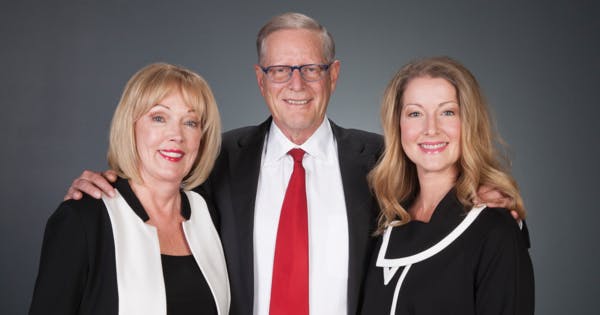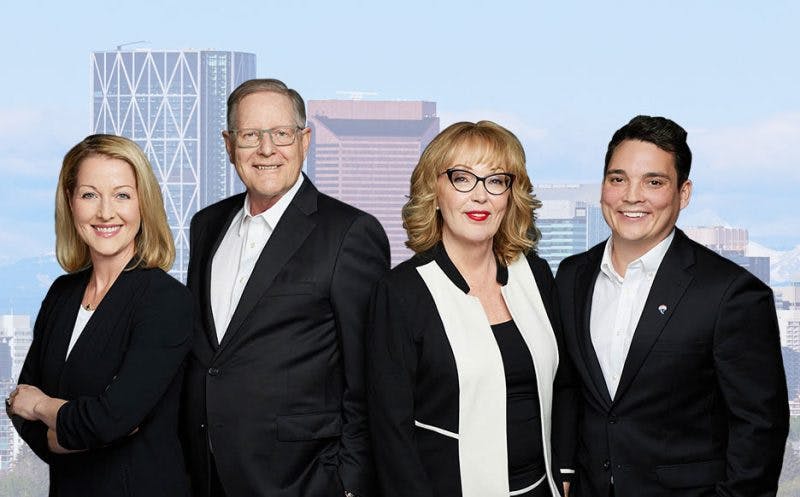Winter Games kicked off 25 years ago today!!

picture taken by Susan Penley at the opening games in Calgary…
“I got caught up in the excitement, really caught up.” Looking back on 16 heady days a quarter-century ago, Alex Biletski can’t help but smile. “It was such a magical time, I remember every single moment.”
Back then, Biletski was a 48-year-old shop teacher at Airdrie’s Bert Church High School, raising two daughters with his wife Eleanor. “We went down every evening to watch the medal ceremonies, see the fireworks,” he says. “It was all free, so even a family on a tight budget could be part of it.”
During the 1988 Calgary Winter Olympics, more than 1,400 athletes from 57 countries competed daily at such venues as Canada Olympic Park and the Saddledome as well as Canmore and Kananaskis Country.
Just under 10,000 lucky Calgarians had coveted access as volunteers; others scored seats at events in a ticket lottery. A few hundred even snagged paid jobs with the various corporations and organizations involved with the Games.
For the rest of us, though, downtown Stephen Avenue became Olympic Central. That’s where we met people from all over the world, including some of the 2,500 visiting journalists and the tens of thousands of tourists who came here to soak in the Olympic excitement.
We partly have our famous Chinook wind to thank: while it wreaked havoc on outdoor event schedules, it brought out the masses for the biggest, warmest street party our city of 657,000 had ever experienced in this first Canadian hosting of a Winter Games.
During the day, people chowed down on Stampede-style breakfasts while street performances competed for attention with the bustling Coca-Cola Pin Trading Centre — a place that would see more than 300,000 pass through its doors over those two weeks, swapping 600 official Calgary Winter Olympic pins along with thousands more licensed and unlicensed pins from around the world. When we got hungry, we headed to the international food tents set up nearby.
In the evenings, arts lovers in a city bursting with unprecedented civic pride headed to one of the Olympic Arts Festival’s 600 performances and exhibitions in places like the Jack Singer Concert Hall. As they did, they rubbed elbows with as many as 35,000 cheering fans who crammed into Olympic Plaza for the medal presentations. No, this was no elitist athletic event — the Calgary Winter Olympics was one giant, feel-good, urban festival that excluded no one.
Newly graduated from the University of Calgary, I was working for Alberta Government Telephones, in a building a block away from the action. Each evening after work, I’d venture on to Stephen Avenue with friends. I was swept up in the happy chaos of the medal crowds, met visitors from all over the world and peeked into the madness that was the pin-trading tent.
For the price of a cocktail, I got to dance at the (long since defunct) Banke discotheque alongside the likes of U.S. figure skater Brian Boitano and Italian ski star Alberto Tomba. The hot air balloons that filled the skyline each day were replaced at night by the glow of the torch atop the Calgary Tower. None of us had ever seen such glitz and glamour in our city.
Back then, Biletski was a 48-year-old shop teacher at Airdrie’s Bert Church High School, raising two daughters with his wife Eleanor. “We went down every evening to watch the medal ceremonies, see the fireworks,” he says. “It was all free, so even a family on a tight budget could be part of it.”
During the 1988 Calgary Winter Olympics, more than 1,400 athletes from 57 countries competed daily at such venues as Canada Olympic Park and the Saddledome as well as Canmore and Kananaskis Country.
Just under 10,000 lucky Calgarians had coveted access as volunteers; others scored seats at events in a ticket lottery. A few hundred even snagged paid jobs with the various corporations and organizations involved with the Games.
For the rest of us, though, downtown Stephen Avenue became Olympic Central. That’s where we met people from all over the world, including some of the 2,500 visiting journalists and the tens of thousands of tourists who came here to soak in the Olympic excitement.
We partly have our famous Chinook wind to thank: while it wreaked havoc on outdoor event schedules, it brought out the masses for the biggest, warmest street party our city of 657,000 had ever experienced in this first Canadian hosting of a Winter Games.
During the day, people chowed down on Stampede-style breakfasts while street performances competed for attention with the bustling Coca-Cola Pin Trading Centre — a place that would see more than 300,000 pass through its doors over those two weeks, swapping 600 official Calgary Winter Olympic pins along with thousands more licensed and unlicensed pins from around the world. When we got hungry, we headed to the international food tents set up nearby.
In the evenings, arts lovers in a city bursting with unprecedented civic pride headed to one of the Olympic Arts Festival’s 600 performances and exhibitions in places like the Jack Singer Concert Hall. As they did, they rubbed elbows with as many as 35,000 cheering fans who crammed into Olympic Plaza for the medal presentations. No, this was no elitist athletic event — the Calgary Winter Olympics was one giant, feel-good, urban festival that excluded no one.
Newly graduated from the University of Calgary, I was working for Alberta Government Telephones, in a building a block away from the action. Each evening after work, I’d venture on to Stephen Avenue with friends. I was swept up in the happy chaos of the medal crowds, met visitors from all over the world and peeked into the madness that was the pin-trading tent.
For the price of a cocktail, I got to dance at the (long since defunct) Banke discotheque alongside the likes of U.S. figure skater Brian Boitano and Italian ski star Alberto Tomba. The hot air balloons that filled the skyline each day were replaced at night by the glow of the torch atop the Calgary Tower. None of us had ever seen such glitz and glamour in our city.
There was so much going on outside the actual official sports events, it would have required a double cloning of one’s self to take it all in: community parties and events in all four quadrants, along with a snow sculpting competition at Prince’s Island.
Still, my money — or lack of it at the time — was on the three-block stretch of downtown that was party central.
“There were people on the streets all the time,” recalls John Gilchrist, Calgary’s best-known food critic. “It was non-stop celebrating, from the early morning right to late at night.”
In 1988, food writing was a side gig for Gilchrist; his day job was director of marketing and public relations for the Glenbow Museum, the site of the immensely popular but controversial Spirit Sings, a $2.6-million exhibition of First Nations artifacts that attracted more than 126,000 visitors over its four-month run. The Lubicon Lake Indian Band urged a boycott of the event to press a 47-year-old land claim dispute with the federal and provincial governments. While some native bands honoured the boycott and refused to lend artifacts, others participated directly. The exhibit shattered museum attendance records with 126,506 people viewing it.
So, whenever he got a break away from the museum, Gilchrist couldn’t help but get pulled into the Olympic action. “Every day for a month, I had lunch at the multicultural food tent,” says Gilchrist with a chuckle. “None of it was all that good; it was more like today’s food court.”
At the time, though, it was revolutionary for a city with a meat and potatoes palate and only a handful of inner-city dining hot spots. “It was food that not a lot of Calgarians had tasted before,” he says. “Food wasn’t sexy then, it was still considered fuel — the Olympics helped to broaden Calgarians’ acceptance of more food cultures.”
One place did get the thumbs-up from the then-nascent expert. “The Restaurant of Switzerland was where so many Calgarians had their first taste of raclette,” he says of the Swiss Olympic committee-sponsored establishment that opened in December 1987 and closed for good a month after the ’88 closing ceremonies.
“The food was good and when the Swiss won a medal, which was often, there’d be huge drinking bouts there.”
You didn’t have to be of legal drinking age to take advantage of the world on our doorstep. Fourteen-year-old Marcello Di Cintio had never been downtown after dark. For those 16 days, though, his parents made an exception. “I don’t even remember the negotiation I had to make with my parents to go,” says the Calgary author. “Maybe they just understood that this was a special case.”
Each day after school, Di Cintio hopped on a bus with a handful of pals. “Our only plan was to be in a good place to watch the fireworks,” he says. “I don’t think we did anything special, other than walk up and down, up and down Stephen Avenue.”
Still, for the teenager who would go on to travel the world and pen several books it gave him his first sampling of the upside of adulthood.
Still, my money — or lack of it at the time — was on the three-block stretch of downtown that was party central.
“There were people on the streets all the time,” recalls John Gilchrist, Calgary’s best-known food critic. “It was non-stop celebrating, from the early morning right to late at night.”
In 1988, food writing was a side gig for Gilchrist; his day job was director of marketing and public relations for the Glenbow Museum, the site of the immensely popular but controversial Spirit Sings, a $2.6-million exhibition of First Nations artifacts that attracted more than 126,000 visitors over its four-month run. The Lubicon Lake Indian Band urged a boycott of the event to press a 47-year-old land claim dispute with the federal and provincial governments. While some native bands honoured the boycott and refused to lend artifacts, others participated directly. The exhibit shattered museum attendance records with 126,506 people viewing it.
So, whenever he got a break away from the museum, Gilchrist couldn’t help but get pulled into the Olympic action. “Every day for a month, I had lunch at the multicultural food tent,” says Gilchrist with a chuckle. “None of it was all that good; it was more like today’s food court.”
At the time, though, it was revolutionary for a city with a meat and potatoes palate and only a handful of inner-city dining hot spots. “It was food that not a lot of Calgarians had tasted before,” he says. “Food wasn’t sexy then, it was still considered fuel — the Olympics helped to broaden Calgarians’ acceptance of more food cultures.”
One place did get the thumbs-up from the then-nascent expert. “The Restaurant of Switzerland was where so many Calgarians had their first taste of raclette,” he says of the Swiss Olympic committee-sponsored establishment that opened in December 1987 and closed for good a month after the ’88 closing ceremonies.
“The food was good and when the Swiss won a medal, which was often, there’d be huge drinking bouts there.”
You didn’t have to be of legal drinking age to take advantage of the world on our doorstep. Fourteen-year-old Marcello Di Cintio had never been downtown after dark. For those 16 days, though, his parents made an exception. “I don’t even remember the negotiation I had to make with my parents to go,” says the Calgary author. “Maybe they just understood that this was a special case.”
Each day after school, Di Cintio hopped on a bus with a handful of pals. “Our only plan was to be in a good place to watch the fireworks,” he says. “I don’t think we did anything special, other than walk up and down, up and down Stephen Avenue.”
Still, for the teenager who would go on to travel the world and pen several books it gave him his first sampling of the upside of adulthood.
“We’d see people from all over the world and a lot of famous athletes,” he says. “The experience was transformative, having less to do with the Games than it did with fostering a sense of being part of a wider society, and being independent in it.”
Di Cintio wasn’t the only Calgary teen who experienced the euphoria of freedom the ’88 Olympics offered. “I was an urban explorer who went everywhere with my bus pass,” says Calgary Mayor Naheed Nenshi, who was 16 at the time “I do remember that I came down pretty much every day.”
Nenshi signed up to volunteer, but wasn’t chosen. He did manage to snag tickets to the opening and closing ceremonies along with one hockey game. His best times, though, were spent “just hanging out” downtown.
Nenshi says the experience had a strong influence on his sense of “what’s possible when people get together in a great public space. People were out and about and meeting other people — Calgarians, people from all over the world.”
While those visitors packed their bags and went home after the Feb. 28 closing ceremonies, many a friendship endured.
“If you were shy before the Olympics started, you certainly weren’t by the time they were over,” says Mark Mogen with a hearty laugh.
The then 33-year-old building operator took in the opening and closing ceremonies, as well as a ski jump competition and some hockey games. What really hooked him, though, was the frenetic activity downtown. “You’d get on the CTrain and everybody was just so darn friendly,” he says. “There was something that was so innocent about it all.”
Along with taking in free entertainment and medal ceremonies, the longtime coin collector naturally gravitated toward the pin trading tent. “I hadn’t even thought of collecting pins until then,” says Mogen, who is on the executive of the Calgary International Pin Club, formed not long after 1988. “I went down for a couple of hours that first day and stayed. It was totally addictive.”
Many of the connections he made over those two weeks exist today. “It was a bit of a letdown to go back to normal life after it was all over, but we’ve kept up the hobby and the friendships.”
One of those friends was Alex Biletski, who also succumbed to the pin trading madness. “I took time off during the day to trade the pins, something I hadn’t even thought of doing before I saw it,” says the 72-year-old widower and fellow Calgary International Pin Club board member. “It was just like a fever,” he says of his longtime hobby, a passion sparked during 16 of the most memorable days of his life.
“You were just riding this big wave of excitement,” he says. “It was a great time for Calgary and a great time for me.”

Di Cintio wasn’t the only Calgary teen who experienced the euphoria of freedom the ’88 Olympics offered. “I was an urban explorer who went everywhere with my bus pass,” says Calgary Mayor Naheed Nenshi, who was 16 at the time “I do remember that I came down pretty much every day.”
Nenshi signed up to volunteer, but wasn’t chosen. He did manage to snag tickets to the opening and closing ceremonies along with one hockey game. His best times, though, were spent “just hanging out” downtown.
Nenshi says the experience had a strong influence on his sense of “what’s possible when people get together in a great public space. People were out and about and meeting other people — Calgarians, people from all over the world.”
While those visitors packed their bags and went home after the Feb. 28 closing ceremonies, many a friendship endured.
“If you were shy before the Olympics started, you certainly weren’t by the time they were over,” says Mark Mogen with a hearty laugh.
The then 33-year-old building operator took in the opening and closing ceremonies, as well as a ski jump competition and some hockey games. What really hooked him, though, was the frenetic activity downtown. “You’d get on the CTrain and everybody was just so darn friendly,” he says. “There was something that was so innocent about it all.”
Along with taking in free entertainment and medal ceremonies, the longtime coin collector naturally gravitated toward the pin trading tent. “I hadn’t even thought of collecting pins until then,” says Mogen, who is on the executive of the Calgary International Pin Club, formed not long after 1988. “I went down for a couple of hours that first day and stayed. It was totally addictive.”
Many of the connections he made over those two weeks exist today. “It was a bit of a letdown to go back to normal life after it was all over, but we’ve kept up the hobby and the friendships.”
One of those friends was Alex Biletski, who also succumbed to the pin trading madness. “I took time off during the day to trade the pins, something I hadn’t even thought of doing before I saw it,” says the 72-year-old widower and fellow Calgary International Pin Club board member. “It was just like a fever,” he says of his longtime hobby, a passion sparked during 16 of the most memorable days of his life.
“You were just riding this big wave of excitement,” he says. “It was a great time for Calgary and a great time for me.”

Text by Valerie Fortney, Calgary Herald February 13, 2013
Read more: http://www.calgaryherald.com/life/Calgary+threw+Olympic+sized+party/7956284/story.html#ixzz2KonSrgto






0 comments on “Calgary threw Olympic-sized party”